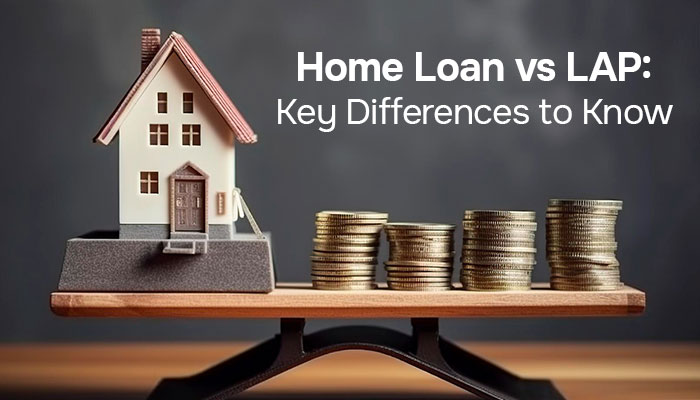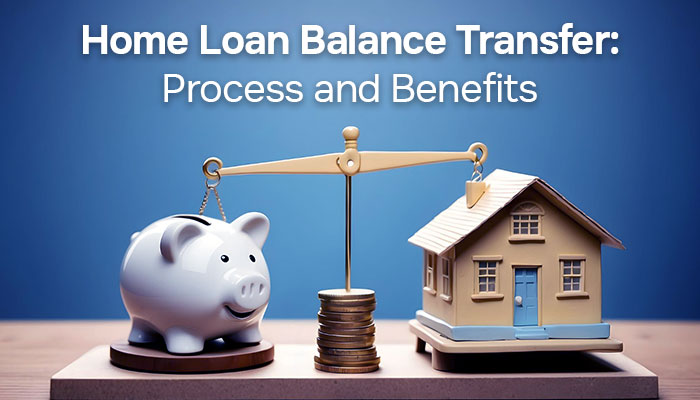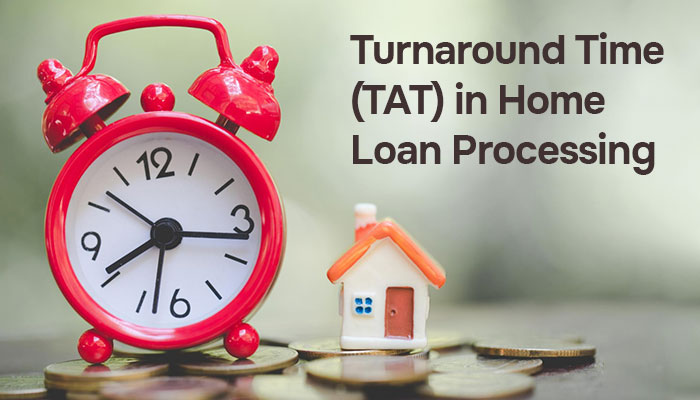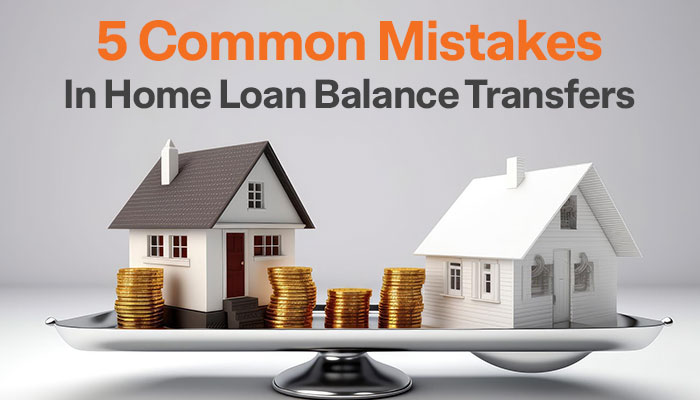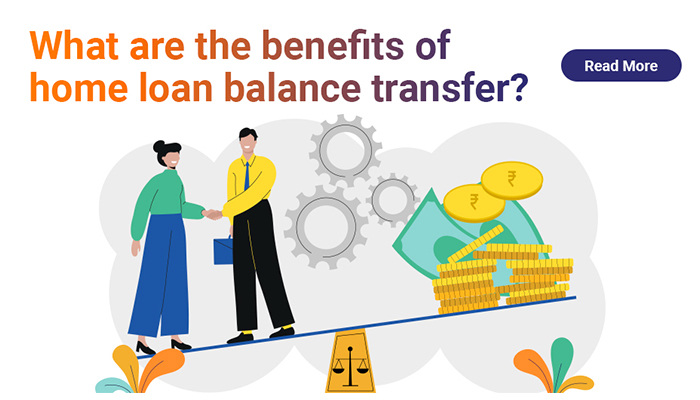Home Loan Prepayment: Your Path to Mortgage Freedom
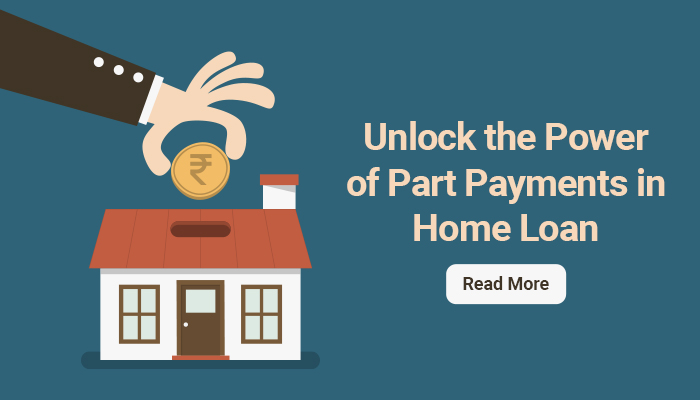
Acquiring your dream home is now more achievable with secured home loans. However, paying the equated monthly installments (EMI) for extended tenures of 20 to 25 years can be daunting. One way of accelerating the repayment of your mortgage loans is by making partial payments.
Part-payment on a home loan involves paying a fraction of the outstanding principal, over and above your EMI. This reduces your overall interest payments, increases savings, and shortens your loan tenure.
Learn about the benefits of part prepayment of home loans and the difference between loan foreclosures and part payments.
Foreclosure Vs. Part Payment Of Home Loans
The key difference between foreclosure and part payment:
- Foreclosure means you pay back 100% of the remaining principal and interest on your loan in a single installment before the due date of the last EMI.
- Conversely, part payment or home loan prepayment means you make a partial payment of the outstanding principal along with your EMI.
Let's say you have a loan balance of ₹5,00,000, which includes both the principal amount and interest. Your last installment is due in 24 months. If you choose to pay the entire balance of ₹5,00,000 before the due date, your loan will be foreclosed. However, if you choose to pay only ₹1,00,000 upfront (which represents 20% of the balance) along with your regular EMI payments, then the additional amount you paid is considered a part payment towards your home loan.
Why Should You Make Part Payments On Home Loans?

You should make partial payments to avail of the following benefits:
1. Reducing the interest burden can lead to significant savings
Your EMI has 2 components — principal and interest. The interest is calculated on the outstanding principal. Since the part payments you make on home loans go toward the principal, your interest component reduces. Thus, your EMI decreases.
To understand how making part payments can reduce your interest, let's consider an example. Suppose you have an outstanding principal of ₹15,00,000, an interest rate of 10% p.a., and a tenure of 120 months. If you prepaid ₹2,00,000, the monthly instalments for these figures can be calculated using the IIFL Home Loans EMI calculator.
|
Particulars |
Loan repayment as per the original schedule |
Repayment through part payments |
|
Outstanding principal |
₹15,00,000 |
₹15,00,000 |
|
Part prepayment |
- |
₹2,00,000 |
|
Annual interest rate |
10% |
10% |
|
Tenure |
120 months |
120 months |
|
EMI |
₹19,823 |
₹17,180 |
|
Monthly savings due to EMI reduction |
- |
₹2,643 (₹19,823 - ₹17,180) |
|
Total amount repaid after 120 months |
₹23,78,713 |
₹20,61,551 |
|
Total interest paid |
₹8,78,713 |
₹7,61,551 |
|
Total savings due to interest reduction |
- |
₹1,17,162 (₹8,78,713 - ₹7,61,551) |
2. Decreases your home loan tenure
Making part-payments towards your loan can significantly reduce your outstanding loan balance. By maintaining your original EMI, a larger portion of your monthly payment will go towards reducing the principal amount. This results in a quicker repayment of the loan and being debt-free sooner.
For instance, if you continue paying the original EMI of ₹19,823, you can repay the loan in just 104 months (₹20,61,551 / ₹19,823).
3. Helps you avail of tax benefits
Part payments on home loans help you claim the following tax deductions under specified sections of the Income Tax Act 1961:
- Up to ₹1,50,000 on the principal component of your EMI u/s (under section) 80C.
- Up to ₹2,00,000 on the interest paid u/s 24b.
- Additional interest deduction of up to ₹1,50,000 for first-time homebuyers u/s 80EEA.
4. Provides flexibility.
You can make part payments on home loans whenever you receive a lump sum through inheritance, performance bonuses, salary increments, etc.
IIFL Home Loans offers housing loans starting from ₹2,00,000.
Bottom Line

Part prepayments of home loans reduce debt-related stress. They help build wealth as you can redirect your money to profitable investments by paying off your loans quickly. However, check the lender's terms and conditions, including home loan prepayment charges, before taking a loan.
If you are a salaried/self-employed resident Indian aged between 18-75 years, apply for IIFL Home Loans' affordable housing loans with zero prepayment charges today!
FAQs
Q1. Why should you borrow a floating interest-based home loan?
As per the Reserve Bank of India guidelines, lenders cannot levy foreclosure/ home loan prepayment charges on floating interest-based borrowings.
If you prepay a fixed-rate loan via a balance transfer, the following home loan prepayment rules apply:
- Pay 5% of the prepaid amount + taxes if the loan is transferred to other lenders within 12 months of 1st disbursement.
- Pay 1% of the prepaid amount + taxes if the loan is shifted after 12 months but before the loan tenure is over.
Thus, floating-rate home loans are better. They help you avoid prepayment charges and save more when market interest rates are falling.
Q2. Should you make small or large part payments on home loans?
Large part payments are better as they can significantly lower your EMI or loan term. If you want to reap maximum tax benefits and do not intend to close the loan before its original maturity date, small part payments are fine.
Q3. Do housing loan prepayments improve your credit score?
Prepaying your home loan can lower delayed/failed EMI payments that negatively impact your credit score. If you prepay your entire loan before its final due date, your credit score can increase.
Q4. When should you make part payments to maximize benefits?
The best time to make part payments on home loans is during the initial phase when a substantial proportion of your EMI goes toward interest payments.
Q5. What are the cons of part payment of home loans?
Part-payment may reduce your savings and tax benefits. If the effective interest rate on home loans is less than the expected rate of return from investments, investing the surplus funds is better than making part payments.
Tags
Disclaimer: The information contained in this post is for general information purposes only. IIFL Home Finance Limited (including its associates and affiliates) ("the Company") assumes no liability or responsibility for any errors or omissions in the contents of this post and under no circumstances shall the Company be liable for any damage, loss, injury or disappointment, etc. suffered by any reader. All information in this post is provided "as is", with no guarantee of completeness, accuracy, timeliness, or of the results, etc. obtained from the use of this information, and without warranty of any kind, express or implied, including, but not limited to warranties of performance, merchantability, and fitness for a particular purpose. Given the changing nature of laws, rules, and regulations, there may be delays, omissions, or inaccuracies in the information contained in this post. The information on this post is provided with the understanding that the Company is not herein engaged in rendering legal, accounting, tax, or other professional advice and services. As such, it should not be used as a substitute for consultation with professional accounting, tax, legal or other competent advisers. This post may contain views and opinions which are those of the authors and do not necessarily reflect the official policy or position of any other agency or organization. This post may also contain links to external websites that are not provided or maintained by or in any way affiliated with the Company and the Company does not guarantee the accuracy, relevance, timeliness, or completeness of any information on these external websites. Any/ all (Home/ Loan Against Property/ Secured Business Loan/ Balance Transfer/ Home Improvement Loan/ NRI Home Loan/ Home Loan for Uniformed Services) loan product specifications and information that may be stated in this post are subject to change from time to time, readers are advised to reach out to the Company for current specifications of the said (Home/ Loan Against Property/ Secured Business Loan/ Balance Transfer/ Home Improvement Loan/ NRI Home Loan/ Home Loan for Uniformed Services) loan.
 Login
Login








